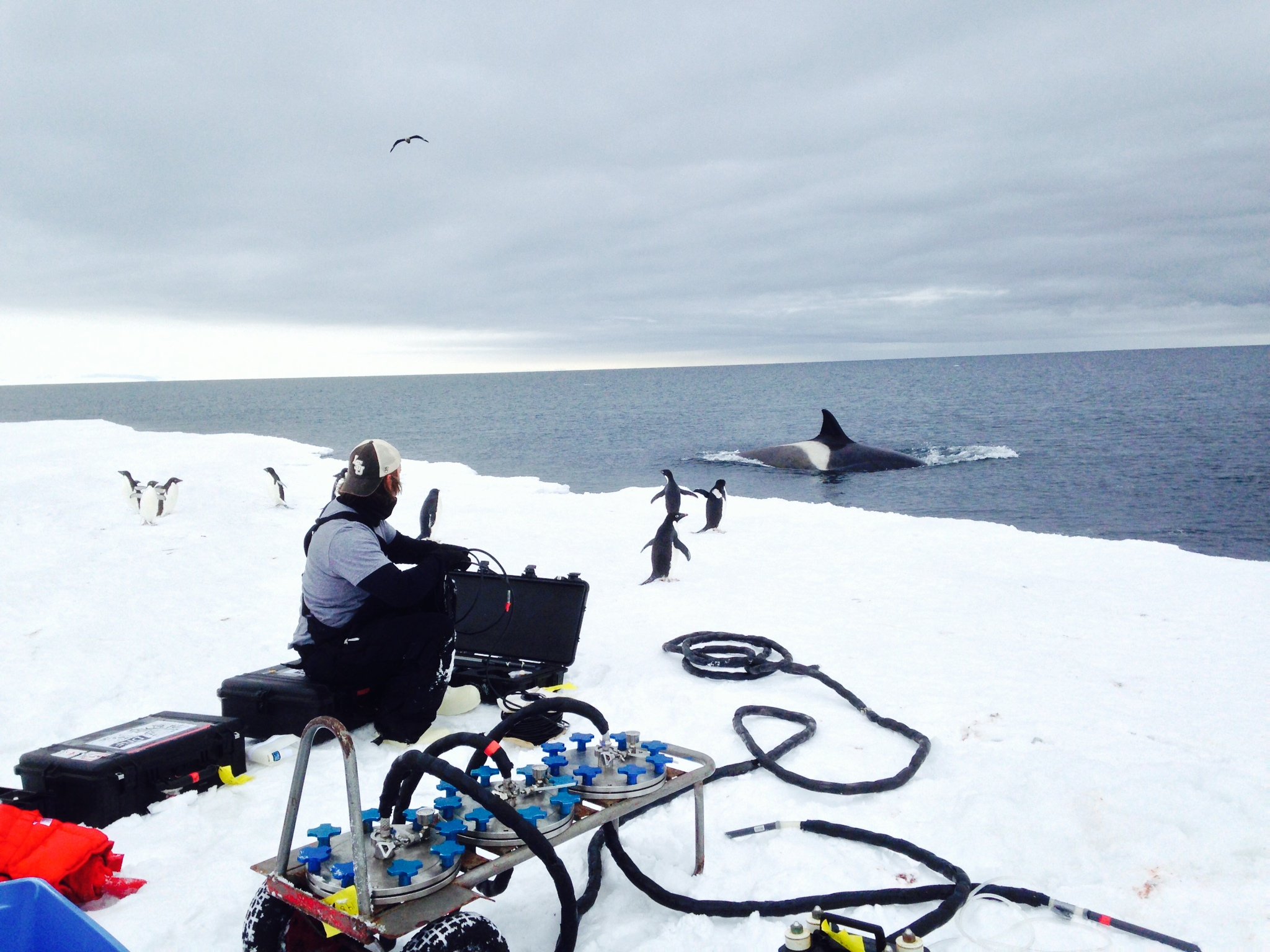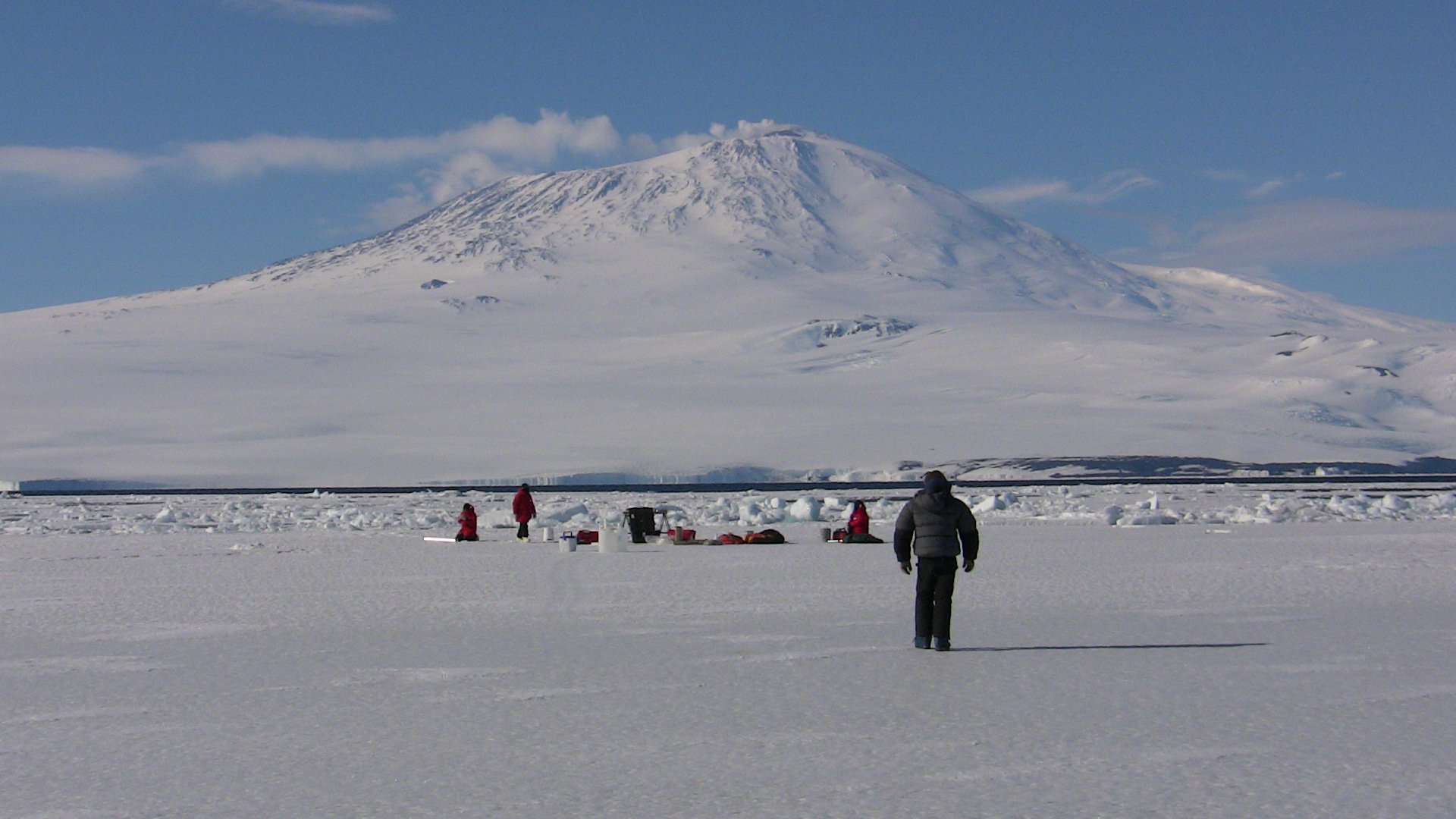Climate change and iron availability may drastically alter algae blooms in the Southern Ocean, trapping vast nutrients
Shifts in diatom population may have profound effects on global nutrient distribution and carbon cycling
LA JOLLA, CA—July 26, 2021—The Southern Ocean (SO) harbors some of the most intense phytoplankton blooms on Earth. Climate change models predict that average SO surface temperatures will rise from their current average of zero to four degrees Celsius by one to two degrees by 2100 and six degrees by 2300. Additionally, while there is considerable uncertainty regarding the impact of projected climate change on anticipated changes in iron availability, it is believed that iron availability will increase in response to glacial melt that occurs in concert with rising temperatures. Iron is a key mineral in low supply supporting algae growth in the nutrient-rich SO.
“Little is known about how changes in surface temperature or expected iron availability may influence phytoplankton biodiversity, community composition, and downstream biogeochemical processes,” stated Andrew Allen, Ph.D., study co-author and professor at J. Craig Venter Institute and Scripps Institution of Oceanography. He continued by saying, “However, Southern Ocean nutrients flow northward, feeding ecosystems worldwide. A significant increase in nutrient consumption here, especially without significant iron addition, may have effects worldwide.”
In this study, light-saturated manipulations on surface ocean microbial communities collected from McMurdo Sound in the Ross Sea were performed to examine the effects of warming, with and without increased iron availability, at three and six degrees Celsius. Researchers monitored overall nutrient levels in the water as well as growth and molecular responses, including global gene expression from two of the most abundant types of algae found there, the diatoms Fragilariopsis and Pseudo-nitzschia.



In all experimental scenarios—where the temperature was raised to three or six degrees Celsius, and whether or not iron availability was increased—more nutrients were consumed, and the diatom populations increased significantly. Fragilariopsis only became more abundant with the addition of iron, whereas Pseudo-nitzschia thrived even without the supplemental iron.
The data adds to a growing body of evidence for Pseudo-nitzschia’s increasingly important role in warming SO ecosystems. Allen remarked, “The idea that warming could compensate for or replace iron in driving significant nutrient consumption was surprising. We have much more to learn about the metabolic mechanisms behind this, but it appears that differences in regulation of gene expression, rather than differences in the type of genes, are a major factor in the ability of Pseudo-nitzschia to take advantage of warming, even in the absence of iron addition.”
These results point to a potentially troubling conclusion: an increase in SO ocean temperatures will likely lead to nutrient trapping, effectively sequestering them, constraining supply to more temperate ocean upwelling regions worldwide. Temperature shifts are likely to increase SO phytoplankton utilization of the vast pool of excess nutrients in the iron-limited SO surface waters, influencing global nutrient distribution and carbon cycling.
The complete study, “Molecular underpinnings and biogeochemical consequences of enhanced diatom growth in a warming Southern Ocean,” may be found in the journal PNAS.
The research team included Dalhousie University, Scripps Institution of Oceanography, University of California San Diego, University of Southern California, College of William & Mary, Memorial University of Newfoundland, University of British Columbia, and Bigelow Laboratory for Ocean Sciences.
Funding for this research, to Dr. Allen at the J. Craig Venter Institute and the Scripps Institution of Oceanography, was provided by the National Science Foundation and the Gordon and Betty Moore Foundation.
About J. Craig Venter Institute
The J. Craig Venter Institute (JCVI) is a not-for-profit research institute in Rockville, Maryland and La Jolla, California. dedicated to the advancement of the science of genomics; the understanding of its implications for society; and communication of those results to the scientific community, the public, and policymakers. Founded by J. Craig Venter, Ph.D., the JCVI is home to approximately 150 scientists and staff with expertise in human and evolutionary biology, genetics, bioinformatics/informatics, information technology, high-throughput DNA sequencing, genomic and environmental policy research, and public education in science and science policy. The JCVI is a 501(c)(3) organization. For additional information, please visit www.JCVI.org.
Media Contact
Matthew LaPointe, mlapointe@jcvi.org, 301-795-7918